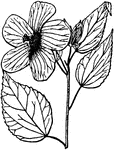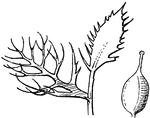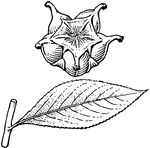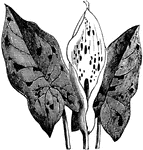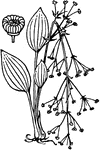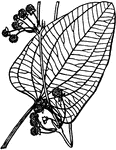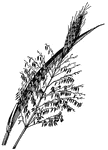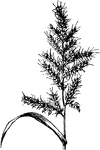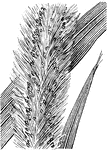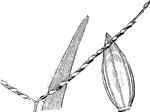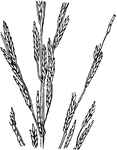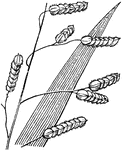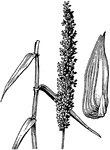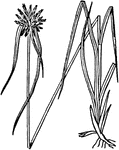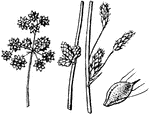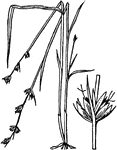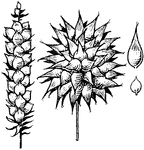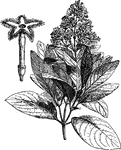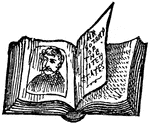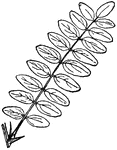
Leaf Beetle
"The Popular-tree Golden bug, chrysomela populi, of a blueish-green, has a strong odor, and…

Walking Leaf
"The Phasmina includes some curious insects, one species of which is the Walking-leaf, Phyllium…

Ascidium
"Ascidium of a Plant. Leaf of pitcher-plant (Nepenthes) with a winged petiole and terminating in an…
Tripsacum
Inflourescences not expanded; the lower pistillate portion breaking up into bony, bead-like joints.
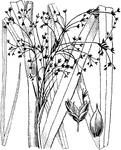
Cladium
Spikelets with the uppermost scale only enclosing an achene; our commonest species has saw-edged. cutting…
Frog Hopper on Leaf
"Frog Hoppers are ranked under the homopterous sub-order of insects. The name of frog hopper refers…
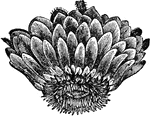
Victoria Regia
"Victoria Regia, named by Lindley after Queen Victoria, is the most magnificent of all known water lilies,…
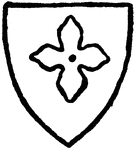
Quatrefoil
"The Quatrefoil is a piercing or panel divided by cusps or foliations into four leaves, or more correctly…
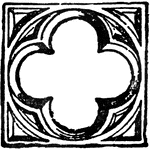
Quatrefoil
"The quatrefoil is four-leaved grass; a frequent bearing in coat-armor."—(Charles Leonard-Stuart,…
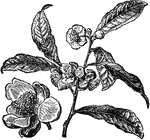
Tea Plant
"Tea is the dried leaf of an evergreen shrub of the natural order Ternstœmiaceæ. It includes the China…

Tea Flower
"Tea is the dried leaf of an evergreen shrub of the natural order Ternstœmiaceæ. It includes…
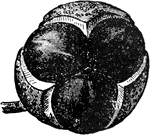
Tea Fruit
"Tea is the dried leaf of an evergreen shrub of the natural order Ternstœmiaceæ. It includes…

Speculum
"Speculum, a mirror, a looking-glass. The looking-glasses of the ancients were usually made of metal,…

Head of a thyrsus
"Shows the head of a thyrsus composed of the leaves and berries of the ivy, and surrounded by acanthus…
Sword
A type of sword called cleddyo. Usually made of bronze and having a "leaf shape" form. the tounge being…
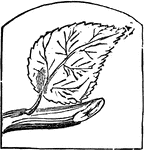
Leaf
One of the three principal parts or organs of vegetation, generally flattened in shape, and greenish…

Bean Plant in Jar
"The bean with its roots in unboiled water will grow for a considerable time, as long as the mineral…
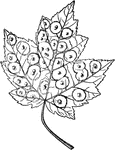
Maple spot gall
"The maple spot gall, so common on the leaves of the red maple, is made by the fungus-gnat of the order…
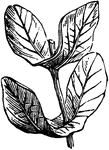
Connate Leaves
A leaf in which the lower lobes are uniteed, either above the stem is sessile or above the petiole if…
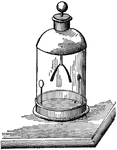
Electroscope
"The electroscope is an instrument for detecting and testing electrification. A metallic rod passes…

Hand with Proof-plane
"A proof-plane may be made by cementing a bronze cent or a disk of gilt paper to a thin insulating handle,…
